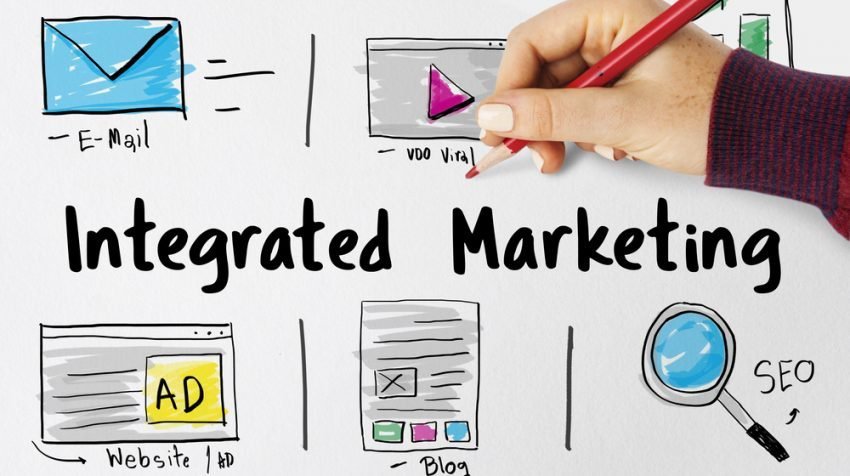Many companies are on the verge of a digital transformation. They want to reap the benefits of the unprecedented possibilities that digital offers them, while at the same time they are still very fond of the non-digital world. Zak’s marketing teams guide organizations in this transition to digitization because you do not want to constantly reinvent ‘marketing wheels’ and fall into all digital pitfalls.
To convince every one of the importance of digitization, we are kicking 3 digital open doors. Are you coming with me?
1. If activities are measurable and if you adjust in the interim, the results are better
One of the most important and biggest differences between traditional marketing and digital marketing is the measurability of results. The results of traditional channels require 1) complex research methods to be made 2) only partially measurable and 3) these results are only available afterward. Intermediate adjustments based on insights are therefore not possible.
This is exactly the opposite for digital channels. For each expression, it can be made clear at any time how many people have seen it, how many clicked on it and what they did afterward. This means that every part of the campaign is evaluated in real time and can then be optimized. In addition to better results, this gives marketers more freedom to shift with budgets during a campaign. A campaign plan is no longer cast in concrete but is optimized in the interim to achieve the best results.
The difference in result is good to imagine. Where organization A draws its hope on an expensive TVC around cooking programs, competitor organization B does online advertising on relevant YouTube videos. If it turns out that advertisements around “Cooking with Shane” (with the cute son of Patrick Kluivert) do well to the target group, the extra budget will be allocated to this. This results in better results. If organization A notices that the TVC around cooking programs on RTL 4 works better than on NPO 3, they have no more freedom to adjust.
2. If you can target more specifically, results are better
Suppose: You want to do a labor market campaign to recruit employees. Then as a marketer, you have two important starting points on which you want to select your target group:
Do they live near where my company is located or where I have offices?
Do they have the necessary interesting characteristics (age, education, interests, work experience) to come and work at my company?
Using traditional channels it is difficult to separate people who do belong to this target group from people who do not. If you manage to respond to one of the two starting points, you will not be able to combine them. So broadcast on a regional TV channel, but still, pay for everyone who does not have the right features (and who miss out on everyone who does not watch regional TV channels).
Digital channels give you the possibility to combine infinite features to reach the right target group. So you can show an advertisement to people who live in a certain region and are in a certain age group and have a specific education. In fact, you can also adjust that message once per specific group. So instead of creating a lot of scopes, you have the possibility to create very relevant reach.
3. If activities are focused on the entire customer journey, results are better
Only using traditional channels in a marketing campaign automatically means that you do not reach the target group in a large part of their customer journey. Do you know a customer journey for buying a product in which no digital means is used? Even for doing the daily shopping there are already several digital resources that you use. Whether it’s looking for a recipe, looking at the offers or keeping a shopping list.
We see that in many customer journeys the traditional channels play an important role, especially at the beginning and end of the journey: in the creation of awareness (in the “see” phase) and in the final purchase of a product (in the “Do” phase). A large part of the intermediate process takes place online. From thinking about the need to compare alternatives and ultimately choosing a product (the “wishes” and “thinking” phases).
Using digital channels in your marketing campaigns gives you the opportunity not only to reach your target group with a message that makes them aware of your product but also to guide them in the intermediate stages until the final purchase. Guiding the target group through these digital channels does not only result in your campaigns becoming more effective but also that you get expensive the whole customer journey can see where your target group is dropping out (and of course directing it back). Bonuses open door: If you do not do much with online marketing channels, you’ll walk behind this article I have shown what the possibilities of digital channels are a marketing campaign. If you feel too little to do with this and are looking for a foundation why you should do this more. Then ask yourself the following questions:
- How can I really measure the effect of my campaigns and adjust them directly?
- How can I really achieve my target group, with all the specific characteristics?
- How can I ensure that I am able to customer journey of my target audience are present These questions help to really think about the use of digital channels?
And you will see that the possibilities that arise are unprecedented.









